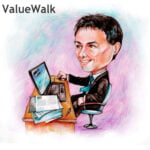Trading Volume: Fear and Loathing on the Marketing Trail, 2014 by Salient Partners
I shared a dark suspicion that the life we were leading was a lost cause, that we were all actors, kidding ourselves along on a senseless journey. It was the tension between these two poles – a restless idealism on one hand and a sense of impending doom on the other – that kept me going.
– Hunter S. Thompson, “The Rum Diary”
There lives more faith in honest doubt, believe me, than in half the creeds.
– Alfred, Lord Tennyson
Preach the Gospel at all times, and when necessary, use words.
– St. Francis of Assisi
Faith is the bird that feels the light and sings when the dawn is still dark.
– Rabindranath Tagore, 1913 Literature Nobel Prize winner
Hold faithfulness and sincerity as first principles.
– Confucius, “The Analects”
I’ve spent the past few weeks meeting Salient clients and partners all across the country: New York, California, Illinois, Texas, Minnesota, Massachusetts, etc. With four teenage or tweenage daughters at home I don’t mind the travel, talking about Epsilon Theory topics with smart, engaged people takes me back to what I loved about academia, and I find tremendous value in listening to what investment professionals have to say about markets today. Of particular note to me is how investment professionals are experiencing markets. What does it mean to be a professional investor or investment advisor in the Golden Age of the Central Banker? Two observations surprised me, and I believe they’re connected.
First, when I had these conversations six months ago I would get a fair amount of resistance to the notion that narratives dominate markets and that we’re in an Emperor’s New Clothes world. Today, everyone believes that market price levels are largely driven by monetary policy and that we are all being played by politicians and central bankers using their words for effect rather than direct communication. No one requires convincing that market price levels are unsupported by real world economic activity. Everyone believes that this will all end badly, and the only real question is when.
Second, trading volumes are abysmal. I know it’s summer, but this is more than just seasonality. Here’s a chart using data from my friends at Barclays PLC (NYSE:BCS) (LON:BARC) showing the 10-year trend in US cash equity volumes.
I love charts that require absolutely no explanation. Since the outbreak of the Great Recession, with a few exceptional months marked by panic selling, trading activity in US equity markets has done nothing but go down. And when you take into account the growth of algorithmic trading and other machine-to-machine activity, which now accounts for as much as 70% of daily trading volume, the decline in actual human beings buying or selling stock in order to acquire a fractional ownership share in an actual real-world company is much more dramatic than this chart shows.
But wait, there’s more. Here’s a 50-year chart (!) from my friends at Deutsche Bank AG (USA) (NYSE:DB) (ETR:DBK) showing the steady growth rate of trading volume in the S&P 500 (INDEXSP:.INX). With an r-squared trend line fit of 96%, this growth rate of 9.3% is an incredibly strong and stable pattern. Until late 2008 or early 2009, that is, at which point the pattern breaks like a thin, dead twig.
How unusual is this 5-year break in the 50-year pattern of equity trading volume growth? Is this perhaps a transitory or random blip? Or maybe just a more pronounced version of a cyclical trough in trading activity. Ummm … no.
Take a look at the chart below showing the degree of deviation from the trend line. Back in the 1973-74 recession trading volumes dropped slightly more than two standard deviations from the trend line. Today we are more than four standard deviations below the trend line, and the separation is steadily getting worse. The 50-year boom in US equity trading activity has not just stopped. It has reversed.
Is this just an equity story? Nope. Here’s a 20-year growth trend and deviation chart for US bonds.
This summer’s anemic trading volumes in both stocks and bonds are neither seasonal nor temporary. As you might expect, the Powers That Be at the bulge-bracket market makers are pretty freaked out and are pushing hard to generate some activity (not that we’d want any account churning, mind you). But all of these efforts announced from on high … all of the reorg’s and all of the revised compensation programs and all of the new investment platforms … it’s all just pushing on a string if there’s been a fundamental change in the behavior of advisors and investors. Unfortunately, that’s exactly what I’ve been seeing and hearing over the past year, and particularly the past few weeks. It’s a buyers’ strike, a massive “meh” about public capital markets, and it’s growing.
These two observations about the state of mind of advisors and investors today – a prevailing belief that market outcomes are driven by monetary policy (what I call the Narrative of Central Bank Omnipotence) and a lack of appetite to do much buying of anything – are two sides of the same coin.
The overwhelming perception I had of the advisors and investors I met over the past few weeks is that they feel as if they’re going along with some big charade. There’s a profound disillusionment with political and economic leaders … not that these leaders are necessarily incompetent, but that they are completely insincere. The advisors and investors I met – no matter how successful they had been over the past five years – were weary of the game and wary of being told what to think. They’re not suckers. They know they’re being played by Authority, whether it’s a Famous Investor talking up his book on CNBC or a Central Banker jawboning the entire market for the umpteenth time or a Chief Economist pushing his latest prediction from some macroeconomic crystal ball, and they’re playing the game right back, usually pretty well. But OMG are they sick and tired of the lack of authenticity in the investment world today!
There’s still plenty of “confidence” in markets, per se, because these advisors and investors are justifiably confident in their knowledge of how the game is played. No one is running for the hills or hiding under a rock. On the contrary, everyone is pretty much fully invested because they feel like they have to be. But there’s no faith in markets, which is a totally different thing than knowledge or intellectual confidence. No one is excited or bulled-up about anything in a visceral or emotional way, so there’s neither a powerful push nor pull to buy anything. I saw lots of faces like this guy in the classic WWI propaganda poster, sort of a wistful far-away gaze, wishing that they had enough faith in something – anything! – that would trigger their animal spirits and get them up out of their comfortable chairs and back into the trenches of actively buying and selling to make a real difference in their portfolios. But alas, no.
I don’t think you have to be an ace salesman or marketing guru to appreciate the crucial difference between knowledge and faith when it comes to driving action, the actual buying behavior that creates markets. My favorite quote on the subject comes from a perhaps unlikely source, St. Francis of Assisi, when he wrote, “Preach the Gospel at all times, and when necessary, use words.” Brilliant! Faith, regardless of its venue or form, is only faintly reflected in words and speeches and Fed employment models. But it shines like the sun from what we DO. Without a faith or belief system to drive us, we human animals tend to DO very little, or at least very little with passion, energy, and growth. Faith, to quote Indian Nobel Prize winner Rabindranath Tagore, is the little bird that feels the dawn of a new day well before the first light of the sun. Where is that little bird today? It’s sure not flitting around in the financial advisor offices that I visited recently.
The animal spirits of greed and fear have been crushed, not so much by zero interest rates or any other specific policy, but more by the non-stop game-playing of our political and economic leaders as they seek to maintain a political status quo within a deleveraging and fragmented world of overwhelming public debt. In macroeconomics we talk all the time about “the crowding-out effect”, where public sector borrowing sops up available private capital and diverts it from more productive uses in the overall economy. What we are experiencing today is a Narrative crowding-out effect, where public stories and words in the service of political goals dominate market expectations and prevent private narratives in the service of greed and fear from taking root in the hearts of investors. When every real-world event is interpreted for us by Voices of Authority within seconds, when Bernanke’s farewell speech is all about social control through communication policy … well, that’s a world designed to tell you what to think, which among thinking people inevitably becomes a world where you are hesitant to act. That’s a world where public insincerity reigns and private authenticity is painted as either quaint or dangerous. That’s a world of “macroprudential policy”, to use our current Fed Chair’s favorite phrase, and you better believe there’s no room at that inn for good old-fashioned greed and fear.
Are there exceptions to this general rule, small pockets of faith in real-world economic activity that retain their power to compel action? Sure. The “US Energy Independence” story, for example, remains strong and motivating among its devotees (of which I am one). In general today, the farther away an investment narrative is from public market game-playing and the closer it is to private market opportunities, the more it inspires belief and action. Everyone I know still believes with their heart of hearts in private market opportunities. It’s the public markets where faith has been lost, and that’s why the Golden Age of the Central Banker poses existential risks for firms and business strategies based on trading activity within those public markets.
For all of us that rely directly or indirectly on healthy, growing public markets for our livelihood, it’s high time to recognize that these markets are neither healthy nor growing. They are hollow and declining. A 50-year bull market in the market itself ended with policy responses to the Great Recession, and we are now in the 5th year of a bear market in the market itself, a bear market that shows no sign of abating but rather of accelerating. I’m calling this an existential risk, because it is, but it’s also a phenomenal opportunity for any investment firm that can make an emotional, animal-spirited connection with public market investors. The capacity for faith is there. Investors will absolutely come back to public markets if they’re given a rationale that works not only for the head but also for the gut, if they’re given a philosophy that is not only smart but also something they can believe in.
What is that investment philosophy that can inspire as well as inform? I don’t know where it ends, but I know where it starts. It starts with what Tennyson called honest doubt. It starts with what Confucius described as his first principles – faithfulness and sincerity.There’s absolutely nothing sincere about the public sphere today, in its politics or its economics, and as a result we have lost faith in our public institutions, including public markets. It’s not the first time in the history of the Western world this has happened … the last time was in the 1930’s … and over time, perhaps a very long period of time, a modicum of faith will return. This, too, shall pass. But in the meantime, investment firms immersed in the public markets had better start adapting to these new political realities.
How? By embracing honest doubt and rejecting the didactic, crystal ball-driven approach to asset allocation and broad portfolio construction that is so rampant in our industry. By embracing sincerity and rejecting the hard sell of “alpha”, as if market-beating returns in this politically-driven investment environment were just a matter of listening to this analyst’s opinion rather than that analyst’s opinion. Adaptation to difficult times is never easy, and the implications of embracing honest doubt and sincerity within an investment philosophy will start to seem rather uncomfortable and weird to most investment firms pretty quickly. But as Hunter S. Thompson said in his most famous line, when the going gets weird, the weird turn pro.
Without adaptation and on its current trajectory of trading volume declines, vast swaths of the professional investment community will have a hard time surviving another 5 years just like the last 5 years. It’s time for reform, not in the sense of adding regulations or government oversight, but in the sense of re-forming our investment beliefs based on first principles of honest doubt and sincerity and, yes, greed and fear. Only then will our actions speak more loudly than the politicians’ and central bankers’ words. And won’t that be a sight?












